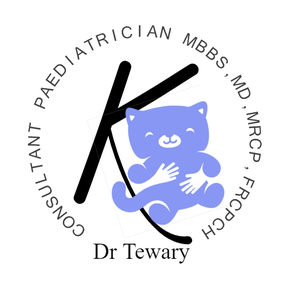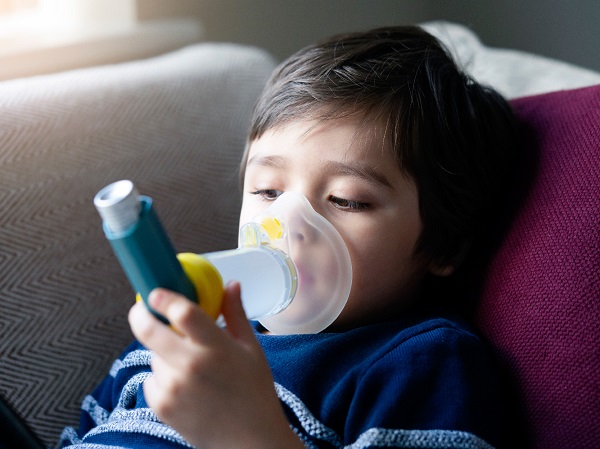Project Description
Summer should be a time for outdoor fun in the sun – but for parents of youngsters suffering from asthma or hay fever it can also be a time for concern.
The symptoms of hay fever can be unpleasant enough but can hay fever actually trigger an asthma attack and what can parents do to protect their children without restricting their time in the open air.
What is the difference between hay fever and asthma?
Both conditions are on the ‘Atopic’ spectrum and are usually caused by release of intrinsic enzymes/factors such as histamine or cytokines.
Asthma symptoms occur due to inflammation of upper airways causing a partial obstruction during exhalation and presents with a typical musical sound called as ‘wheeze’ and/or in difficulty in breathing.
Hay fever symptoms are produced due to inflammation of nasal mucosa and usually present with nasal stuffiness, sneezing, runny nose and blocked nose. The eyes can also be affected causing itchiness with occasional redness, watery discharge and swelling around eyes. Symptoms normally occur after the person is exposed to a trigger such as pollen.
If a youngster suffers from hay fever are they also more likely to suffer from asthma?
Someone suffering with hay fever may have predisposition to asthma but this is not always the case. People can suffer with one or the other.
How important is it that they continue their inhaler regime – is there any case for parents asking their GP to assess their child’s inhaler dosage over the summer months?
Once diagnosed of asthma it is important to continue with inhalers as prescribed. There are usually two types of inhalers prescribed- blue and brown. Blue is a reliever and used ‘as and when’ child feels wheezy or breathless, the brown inhaler is a preventer and once started should be continued every day as per prescription unless doctor has reviewed the condition and decided to stop it.
It is quite common for people suffering with asthma to have a worsening of their symptoms as seasonal triggers such as pollens and grass come into play so doctors can provide an ‘Asthma Treatment Plan’ to address such symptom fluctuations and this could mean a change of inhaler dosage.
However if after being given a ‘Plan’ if the symptoms are not settling or even getting worse then the patient should revisit their GP to discuss the possibility of further changes.
What precautions can you take to protect your child from the effects of hay fever?
Avoidance of triggering factors such as exposure to grass and pollen can help but it can be extremely difficult and damaging to a child’s day to day life to implement this.
The general precautions recommended are:
- Avoid high pollen count areas
- Shake or even wash clothes after coming in from outdoors
- Keep windows closed
- Dry the clothes inside or in a dryer, rather than hanging them on the line where they may be exposed to various ‘triggers’
- Take regular showers and keep the child’s hair clean and free from pollen that may have been picked up while outdoors
- Try not to rub itchy eye, instead wash the entire face with a clean cloth and a gentle cleanser
- People are often advised to avoid histamine-producing food such as smoked and cooked meat, fish, cheese and nuts and take more of Omega 3 fatty acid though green vegetables, carrots, beans, and fish oil. However, the evidence around this is variable and I would only consider taking this option in very severe cases.
- Parents take note! If you smoke around your children you will be at risk of adversely affecting your children.
We often think it is hay fever causing the problems but are there other allergies we should be aware of?
Hay fever typically present with localised symptoms such as nasal congestion, stuffiness, eye irritation in combinations, and has very seasonal occurrence at certain specific times of the year.
Other localised conditions such as an allergic conjunctivitis (eyes go red and sore), or perennial rhinitis (nasal symptoms round the year) can often be confused with hay fever. They are usually isolated and need some specific treatment. Children should be seen by a doctor if symptoms are not settling with normal day to day remedies.
Are there any over-the-counter medicines that can offer good hay fever/allergies relief?
Anti-histamine tablets and syrup are available as well as non-medicated nasal sprays. However one should not use it without discussing with your pharmacist.
Are there any lifestyle changes such as diet or exercise that could ease the problem?
A good and active lifestyle often boosts the immunity. Avoidance of Histamine releasing food and taking more of Carotene and Omega 3 fatty acid has been shown to provide some relief, although, as said earlier, the evidence is variable.
We don’t want to wrap our children in cotton wool but should asthmatic children avoid any particular environments during the summer?
Although asthma is most commonly precipitated by viral infections a proportion of children may have onset with exposure to environmental factors. While avoidance of these factors often helps in alleviation of symptoms, it is not recommended to restrict a child’s activity from playing out to the extent of affecting their development and socialisation. A balance should be achieved with precautions as above mentioned.
How is it diagnosed?
Asthma is mostly a diagnosis made on basis of history and clinical findings. In clinical settings, children often get other tests with their breathing such as Peak Flow measurement, and sometimes Lung Function tests.
X-ray I of chest any sometimes be requested in severe cases however it is s not a recommended test to make the diagnosis.
Is there a treatment:
There are usually 2 types of medications:
- Reliever: an inhaler to dilate the airways
- Preventer: a storied inhaler to suppress the hyper-reactivity process and inflammation.
There are several steps to the escalate the treatment phase and it can vary from a simple blue inhaler to dilated the air ways to adding steroids by inhalation, or sometimes by intravenous or oral route in moderate to severe cases. It is always advised to give the inhalers through a Volumatic/ chamber (a wide funnel shape portable chamber) to increase the efficacy of medicine in children < 5 years of age, and also to add a mask in very young children.
There are other medications known as ‘Immuno-modulators ’to target the process and stabilise the calls which react causing the symptoms of Asthma.
Children with sever presentation often need other supporting measures such as Oxygen, or in a minority of cases a respiratory support.

